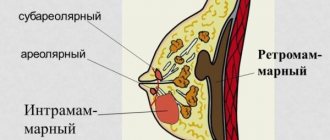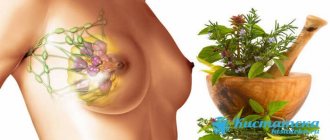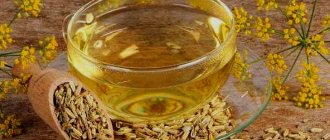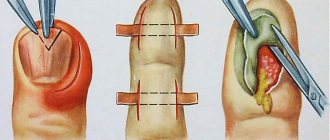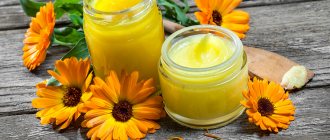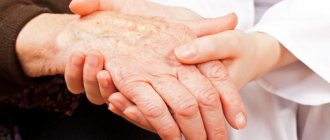Alcohol compress for sprains
A vodka compress for sprains can be prepared from pure alcohol and vodka or supplemented with medicinal herbs. Various plants can be infused and stored for a long time, so that in case of injury there is a ready-made remedy.
Compress for sprains
You can use alcohol to make tinctures from mountain arnica and chestnut fruits. To prepare the first one, you need to take 20 g of raw materials, add 250 ml of alcohol, and leave for a month in a dark room. The finished product should be stored in a tightly closed container.
An infusion of chestnuts and lilac flowers is prepared using the same algorithm. Gauze rolled up in several layers is moistened in the finished product. The compress is applied to the affected area for 4 hours.
Alcohol compress has contraindications:
- skin rashes, wounds, scratches, allergic rash;
- oncological diseases;
- severe pathologies of the cardiovascular system;
- age up to 3 years and pregnancy period.
Compress with Dimexide
The use of Dimexide helps relieve pain, normalize blood flow, and speed up recovery. Compresses with medicine prevent stagnation and the formation of blood clots.
Dimexide
To prepare the product, you need to dilute 50% Dimexide with water in equal proportions. Gauze is soaked in the resulting mixture and then applied to the diseased ligament. Cover the top of the compress with a napkin. It is left for half an hour. The course of application should not exceed 14 days.
Important: Strained back muscles: symptoms, first aid and treatment methods
It is recommended to wear gloves when preparing the compress so that you do not accidentally transfer the medicine to the mucous membrane of the eye.
This medicine, like others, has contraindications, so use is permissible after consulting a doctor.
With hot milk
Cold compresses and lotions for sprains, ruptures of muscles and ligaments are needed in the first days after injury. From the 3rd day you can already carry out heat treatment. A compress with hot milk is prepared in the standard way. It needs to be changed as it cools down up to 3 times.
Milk for compress
Hot compresses should not be used in cases such as:
- acute inflammatory process;
- the presence of an infectious focus;
- high body temperature;
- general malaise;
- cardiovascular pathologies;
- dermatological diseases, allergies.
Contraindications
Independent measures for sprained ligaments are necessary in any case. Even after complete rupture of the elastic fibers, some elements of home treatment are introduced into the postoperative rehabilitation scheme. Therefore, you need to know what and under what conditions you cannot do:
- During the first three days after injury, any heat is prohibited - hot lotions, baths, saunas, solariums.
- It is not advisable to drink alcohol during rehabilitation. Alcohol not only impairs healing, but also increases the risk of re-injury to the ligament.
- It is recommended to begin developing the joint 3–5 days after the injury. You should not do gymnastics if the exercises cause pain and discomfort at the site of the sprain.
- Medicines from the NSAID group should be taken with caution for ulcers and other gastrointestinal diseases, and it is better to completely abandon them.
- It is not recommended to use alternative medicine recipes to which you are allergic.
With clay powder
To treat ligaments and tendons, it is recommended to use green or blue clay, but any clay will do. The main thing is that it is not contaminated. You can make compresses only from clay, applying it to gauze, or combining various means.
Recipes for compresses for sprained muscles and ligaments with the addition of clay:
- clay powder is diluted with fresh urine to the consistency of sour cream, the mass is applied to thick gauze, which is wrapped around the injured limb, it can be kept for up to 7 hours, leaving it overnight;
- sour milk or cabbage brine is diluted with clay to a creamy consistency, the product is applied in a similar way.
Clay can be diluted with decoctions of medicinal herbs - elderberry flowers, bay leaves, yarrow.
Main types
Immediately after the injury, the person is able to walk normally. And only after a while does swelling and pain occur. Doctors claim that such temporary “well-being” is quite dangerous, since it leads to a delay in the treatment process.
Therefore, it is very important for a person who has been injured to seek medical help in a timely manner. A competent specialist will tell you what to do if you sprain your leg.
Treatment will depend on the extent of the damage. The following types are distinguished:
- Mild degree. Injury occurs when there is minor damage. Symptoms are mild. Unpleasant sensations disappear quickly - within 1-3 weeks.
- Average. The structure of the ligaments is broken. Tears and overextensions are possible, as a result of which the integrity of the joint is not maintained. The patient experiences serious difficulty moving the affected leg.
- Heavy. At this degree, there is an almost complete rupture of one or several ligaments of the joint. The patient experiences severe pain, sometimes leading the person to a state of shock. There is no stability in the damaged joint. The joint is either completely stiff or loose.
It is necessary to distinguish muscle damage from ligament injury. Doctors give the following sign that allows one to distinguish between these pathologies. When muscle tissue is damaged, pain occurs within a day. If acute discomfort and characteristic symptoms are observed 3 hours after the injury, then we are talking about a ligament injury.
At the same time, the risk of both pathologies occurring simultaneously cannot be excluded. Your doctor will best advise you on what to do if you sprain the muscles and ligaments of your leg. And only he can make a correct diagnosis.
With laundry soap
Lotions and compresses with laundry soap are used at night. To prepare, take a bar of soap, 10 Aspirin tablets, 250 ml of vodka. The ingredients are crushed, poured into a jar, and alcohol is poured on top. The product is infused for 3 days. The finished infusion is filtered, gauze is moistened in it, and applied to the sore spot.
Using the same algorithm, a compress is prepared with soap, black radish and sour cream. It should be changed every 3-4 hours.
Important: Sprained inguinal ligaments: causes, symptoms and treatment
Warming up with sand
Instead of the main component, you can use regular table salt. The effect of the procedure will not decrease at all.
A little sand needs to be heated on a baking sheet in the oven or in a frying pan. Place it in a special fabric bag. This “compress” should be applied hot to the sore spot.
Just do not heat the sand or salt too much. Because it is very easy to burn your skin.
With ginger root
A sprain compress with ginger can be used daily to reduce pain. To prepare, you need to take 2 spoons of root, ½ spoon of chili pepper, 1 spoon of turmeric, sesame oil. All spices are mixed to the consistency of an ointment. The mixture is heated in a water bath before use. The compress is fixed with bandages for 2-3 hours.
Ginger root
A mixture of a spoon of ginger, sugar and 350 ml of water is prepared over low heat for 30 minutes. After cooling, gauze is soaked in it and applied to the damaged ligament. In addition, this remedy can be taken orally to relieve pain from joint diseases.
Recipes for treating sprains
There are a lot of methods of traditional ankle treatment. Check out some popular recipes for treating sprains based on the listed remedies in more detail. For compresses and lotions the following are often used:
- vodka;
- Hot milk;
- clay;
- puff pastry;
- various plants (plantain, elecampane, eucalyptus, aloe, elderberry);
- vegetables (onions, potatoes, garlic);
- natural bodyaga;
- vinegar (apple, wine).
Compresses and applications
Ankle sprains are effectively treated in the following ways:
- Onion compress. It is necessary to finely chop (grind in a blender) several onions, add 1 tbsp to the pulp. spoon of salt. Take 2 pieces of gauze, put the mixture between them, then on the tumor. Leave the compress on the sprain site for 5-6 hours. Duration of use – 1 time per day until swelling is completely eliminated.
- Clay applications. You need to dilute it with water to the consistency of sour cream. If there are abrasions and scratches, it is useful to add chopped garlic cloves. Place the mixture on a cloth (gauze) and leave it on the affected area so that it does not move. After about 2-3 hours, the compress will become hot and the clay can be removed. 2-3 lotions are enough to eliminate swelling of the foot.
- Pool cleaner to prevent water from blooming
- Pumpkin pie: recipes with photos
- The right dinner for losing weight
Herbs
Herbs that can help reduce swelling can be found in any pharmacy. Some people have them growing on the windowsill, for example, aloe. Application:
- This medicinal plant needs to be washed, finely chopped until mushy, applied to the tumor and bandaged.
- When the compress warms up, remove it.
- Apply as needed until symptoms resolve.
It is pleasant to treat sprained ligaments in the leg with the help of herbal baths. The following herbs are suitable:
- calendula;
- plantain;
- birch leaves;
- mint;
- chamomile;
- series.
Cooking method:
- The water for the bath should be warm, but not hot.
- Take it until it cools completely.
- After several procedures of 20-30 minutes, complete restoration of the ankle ligaments is possible with mild damage.
Ointments
Ointment for muscle and ligament sprains can be prepared at home by purchasing the ingredients at the pharmacy. To get an effective remedy you need:
- soak comfrey roots (100 g) in olive oil (50 ml) for 2 weeks, strain the oil;
- melt beeswax (40 g);
- add to it 1 glass of castor oil, 20 drops of essential oil, olive oil;
- stir, pour into a convenient container;
- the ointment is ready; Use at night - smear the sprained area.
To relieve pain after an ankle injury and speed up the healing process, you can use propolis ointment. “Homemade cream” must be applied to the feet in a thick layer and covered with wax paper. The ointment is prepared as follows:
- put 100 g of Vaseline in a saucepan and boil it;
- cool;
- add crushed propolis (about 15 g);
- cook the mixture for 10 minutes;
- remove from heat, filter and cool.
With onions
The chopped onion is wrapped in cheesecloth and steamed. Wrap a warm compress around the area of greatest pain. It can be applied 3 times a day. Also, chopped onions are mixed with granulated sugar and used in the same way.
Onion
Warm and cold compresses with onions can be used 3-4 days after injury. They can be applied daily for pain relief. After the procedure, it is recommended to make an iodine mesh and fix the damaged area.
From olive oil
Olive oil with chamomile for compress
Olive oil contains vitamins A, K, C, E, fatty acids, tocopherol, sterols, and antioxidants. It can be used for rubbing and compresses. To prepare, you need to boil 250 g of oil, adding a spoonful of chamomile flowers. When the product has infused for 15 minutes, you can moisten the gauze in it.
Olive oil and beeswax are prepared in a water bath. The cooled mixture is applied to the sore spot. To speed up tissue healing, you can use an oil infusion of St. John's wort. Half a glass of flowers is poured with oil, the mixture is infused for 21 days in a dark room.
With garlic
Garlic
A large head of garlic is grated and melted butter is added to it. The product is applied to the affected area. The compress may cause a burning sensation, but soon the discomfort goes away. It is applied for 1-2 hours. Garlic compresses should not be used at elevated body temperatures or when the skin is damaged.
Important: Neck muscle strain: everything every person should know about it
Urine compress for sprains
Using your own urine, you can make rubbings and compresses. It is better to use fresh urine or keep it in a cool place in a tightly closed container. To prepare compresses, you should take morning urine, because it contains a high concentration of biologically active substances. When applying a compress at night, it must be secured with an elastic bandage. Urine can be preheated in a water bath.
Which compress to use for a sprain, warm or cold, will depend on the course of the injury. When there is no acute inflammation and the general condition is satisfactory, heated urine can be used. In other cases, only cold compresses are used to avoid complications. It is recommended to apply a compress with urine no more than 2 times a week.
Urine compresses should not be used in the following conditions:
- individual intolerance;
- venereal diseases;
- inflammatory processes of the genitourinary system and kidneys;
- undergoing radiation and chemotherapy;
- pregnancy period (after consultation with a doctor).
Treatment at home using compresses can only be carried out after examination by a doctor. Folk remedies will only be an addition to the main treatment.
Recipes for compresses with leaves
- If you have prepared the leaves using the first method by turning them into a paste, apply it to the wound, apply gauze over it, and then wrap the whole thing with a bandage. By using this method, cabbage will have a chance to reveal its medicinal properties.
- If you prepared the leaves according to the second method, then apply the prepared warm and beaten leaves (for example) to the sore knee 2-3 leaves, on top of a foil or plastic bag to preserve heat. Then wrap it in a woolen scarf or handkerchief. Depending on the pain, you can change the leaves when the applied ones dry out. If everything feels comfortable, then leave the compress overnight. But if it burns too much, take it off immediately.
- A compress of cabbage leaves and kefir for salt deposits and joint pain. First, soak any suitable cloth in kefir and apply it to the place where it hurts. Then place several crushed cabbage leaves on it and secure it all with an insulating bandage (scarf, shawl, etc.). If comfortable, leave it overnight. Repeat until the pain goes away, but no more than 5 days. If necessary, repeat after a week.
- Compress of cabbage leaves and honey for arthritis. First heat the cabbage leaf until warm, beat it a little with a kitchen hammer so that the juice appears and spread a thin layer of honey, put it all on the problem area and secure it with a bandage. Cover the top with film and insulate it with something warm, such as a scarf or warm shawl. If comfortable, leave overnight.
What are the benefits of cabbage compresses?
Cabbage compresses should be made after injuries that result in swelling on the body.
Most often they are used for dislocations. If you apply a cabbage poultice immediately after a sprain, the swelling on your leg will disappear very quickly and will no longer bother you.
If cabbage is used at the right time, that is, immediately after an injury, you can even prevent swelling in the ankle or other areas of the body.
In addition, cabbage also helps with frostbite, burns, and boils. It accelerates the regeneration of cracked epidermis.
Remember to use kale only as a supplement and not as the only form of treatment. Should always be used in conjunction with pharmacological drugs.
Cabbage juice
In addition to cabbage compresses, you can take advantage of the properties that the juice itself has. First of all, it helps in the treatment of ulcers.
It also has a positive effect on headaches and malaise and soothes hangover symptoms that occur after drinking too much alcohol.

